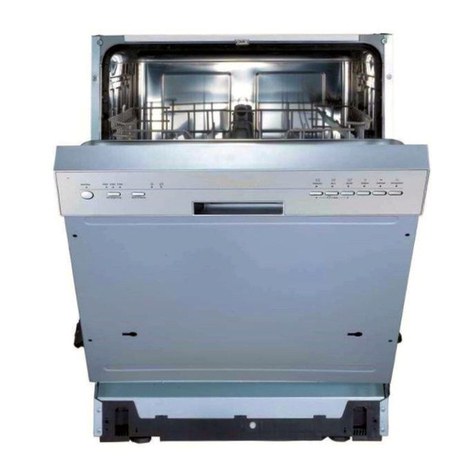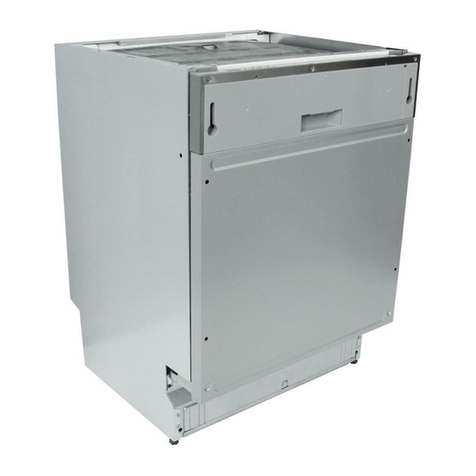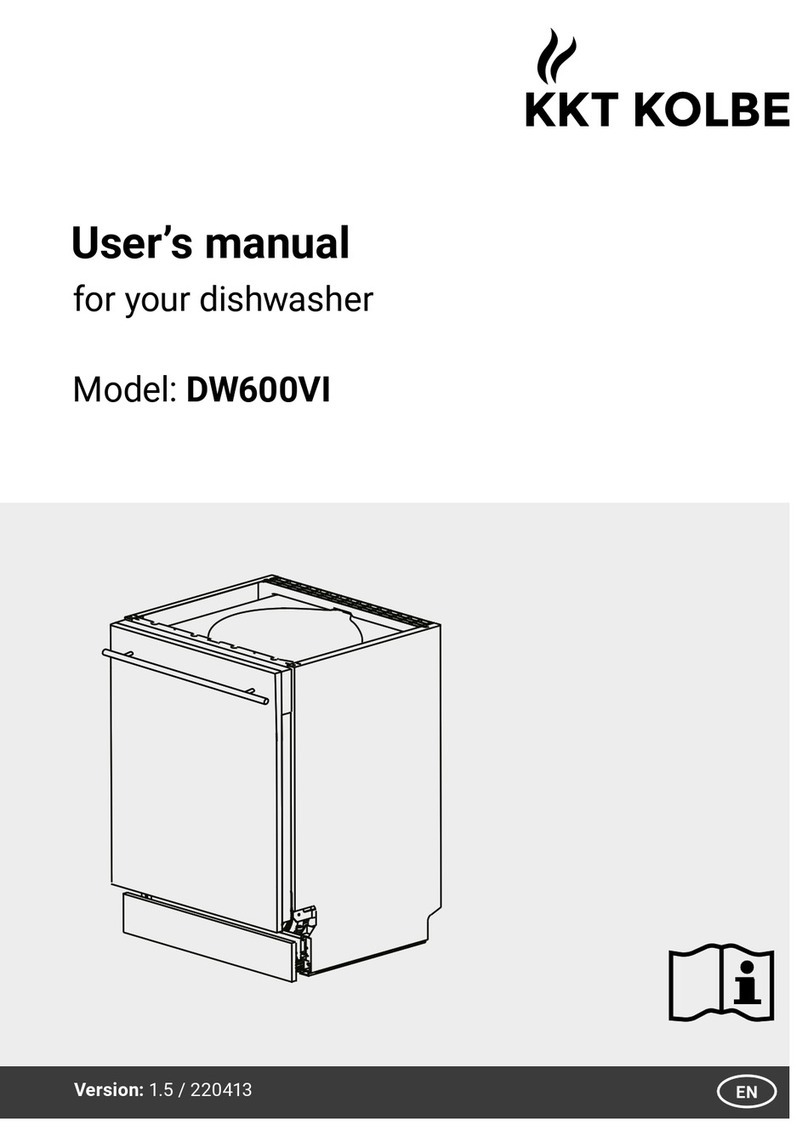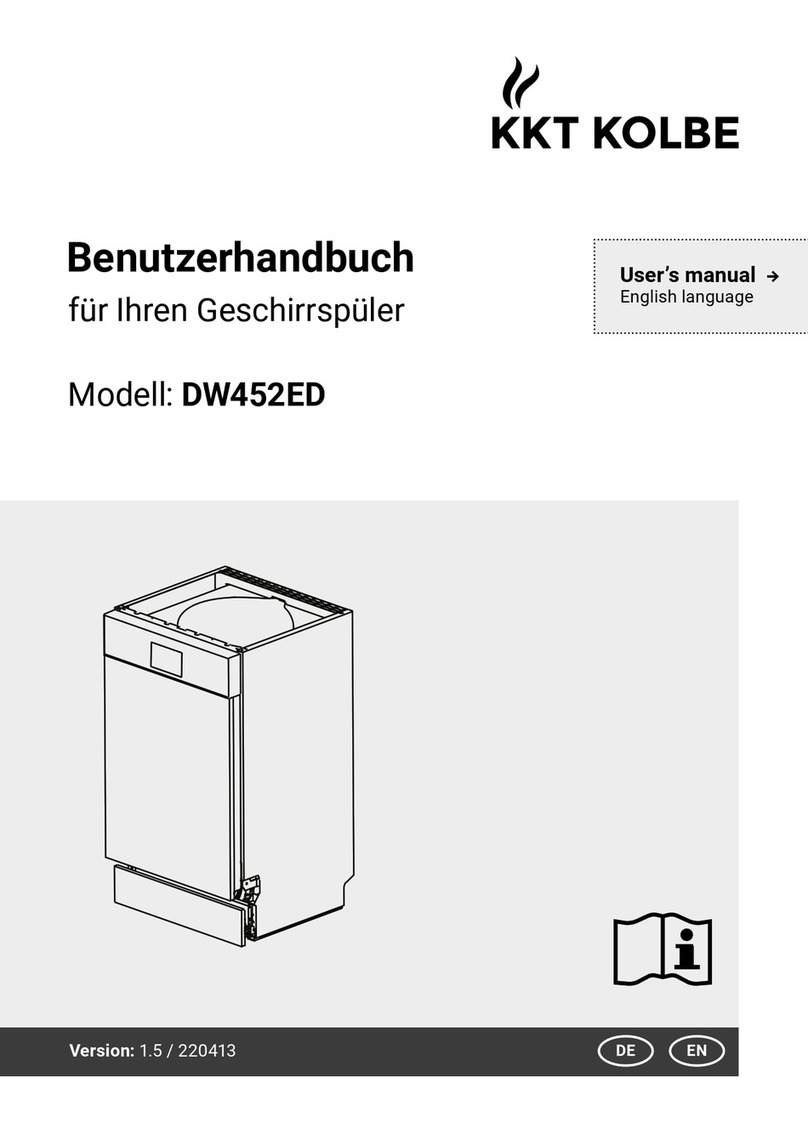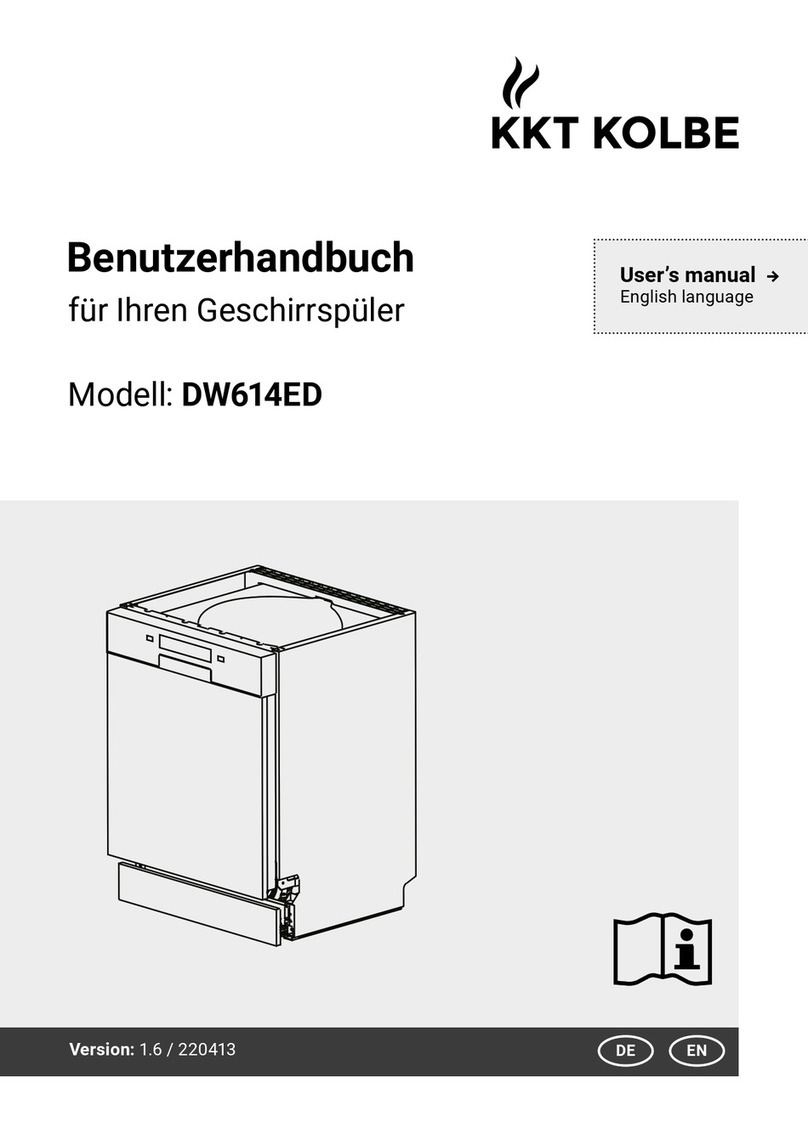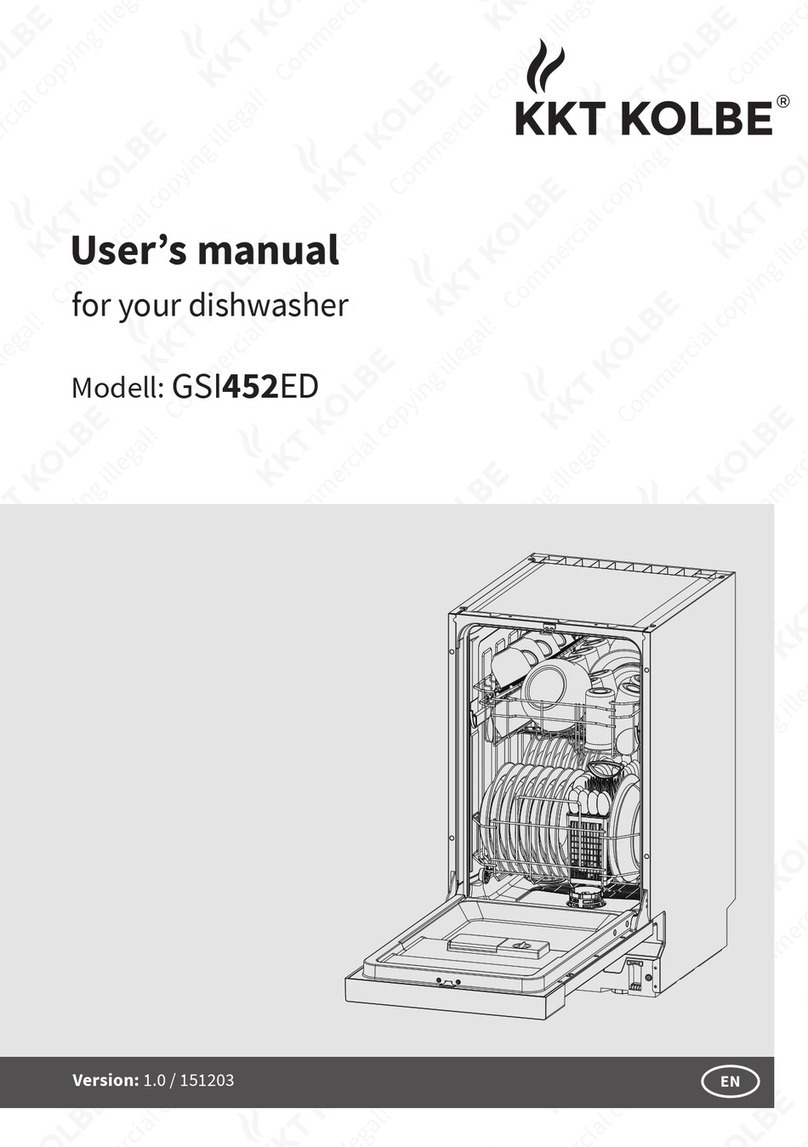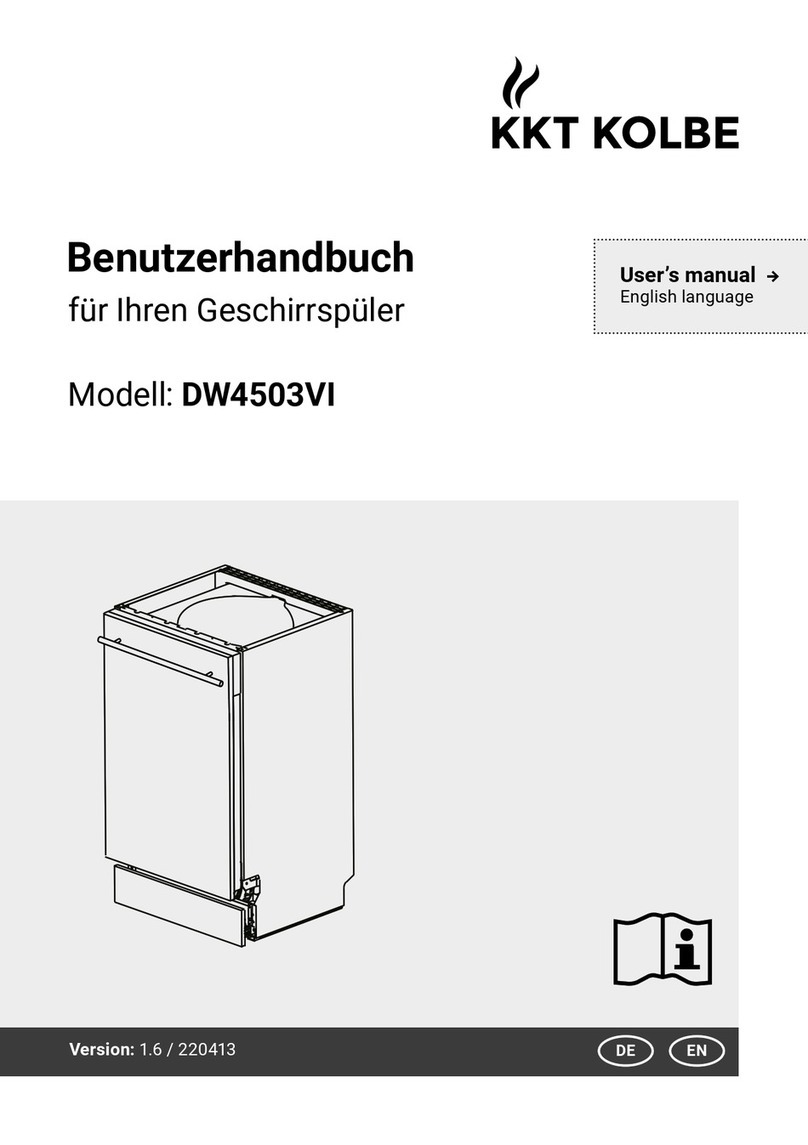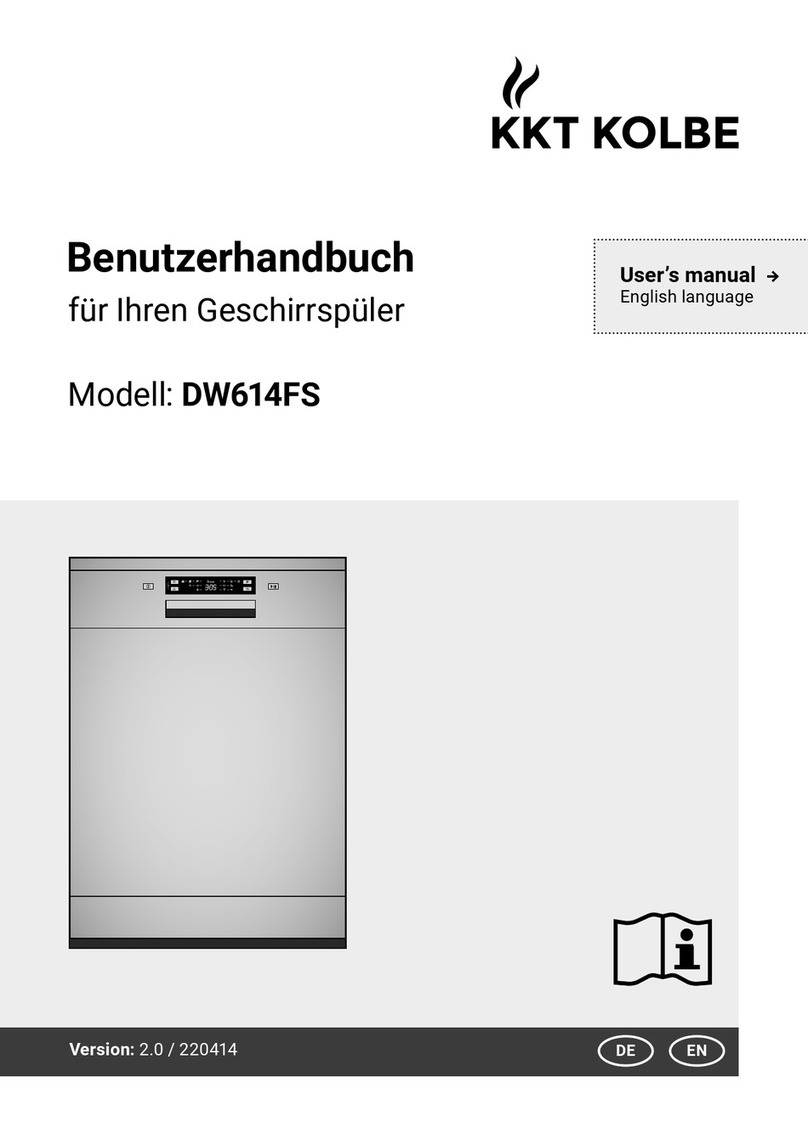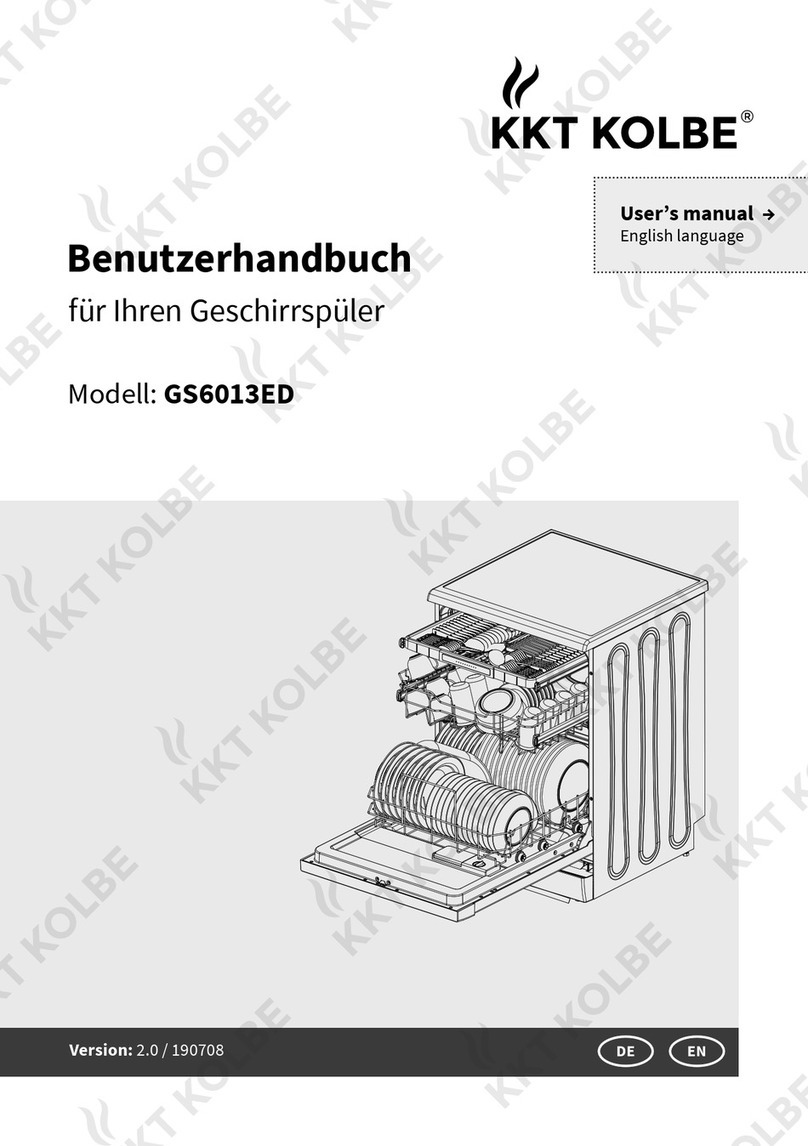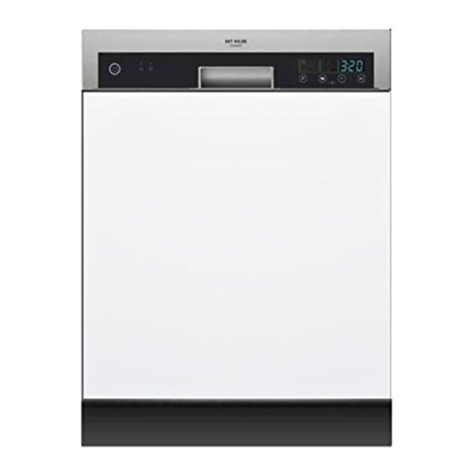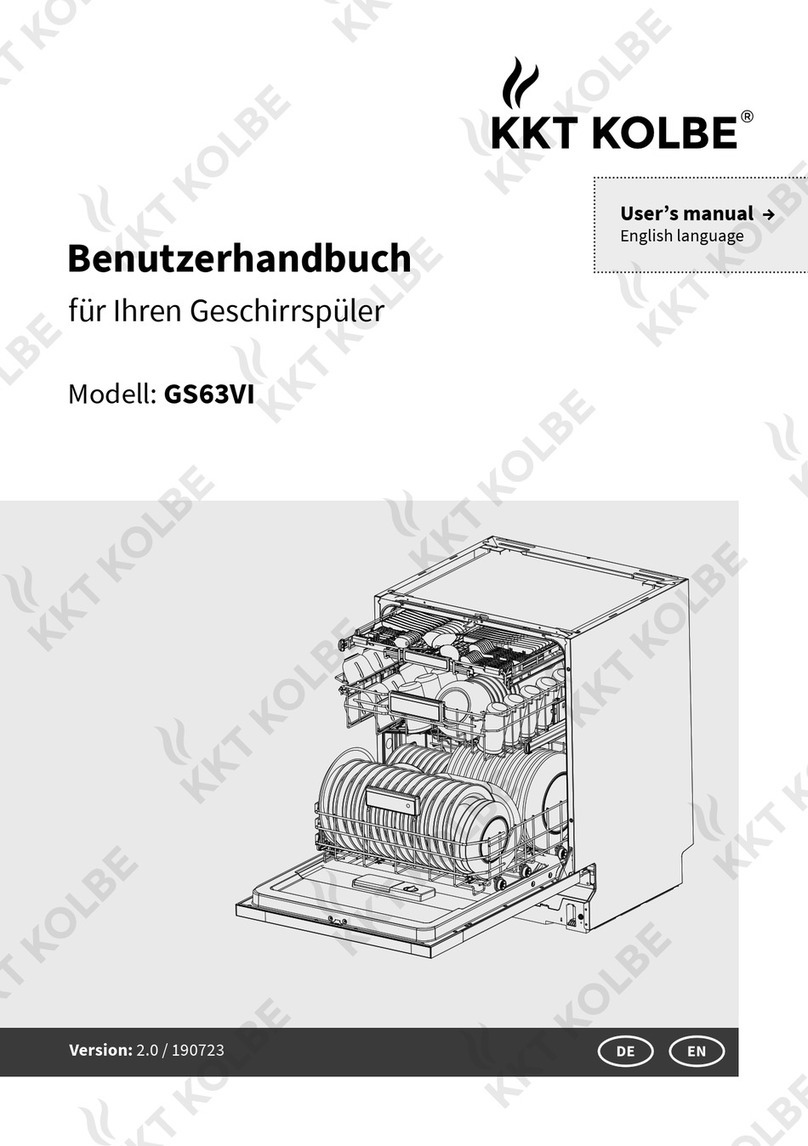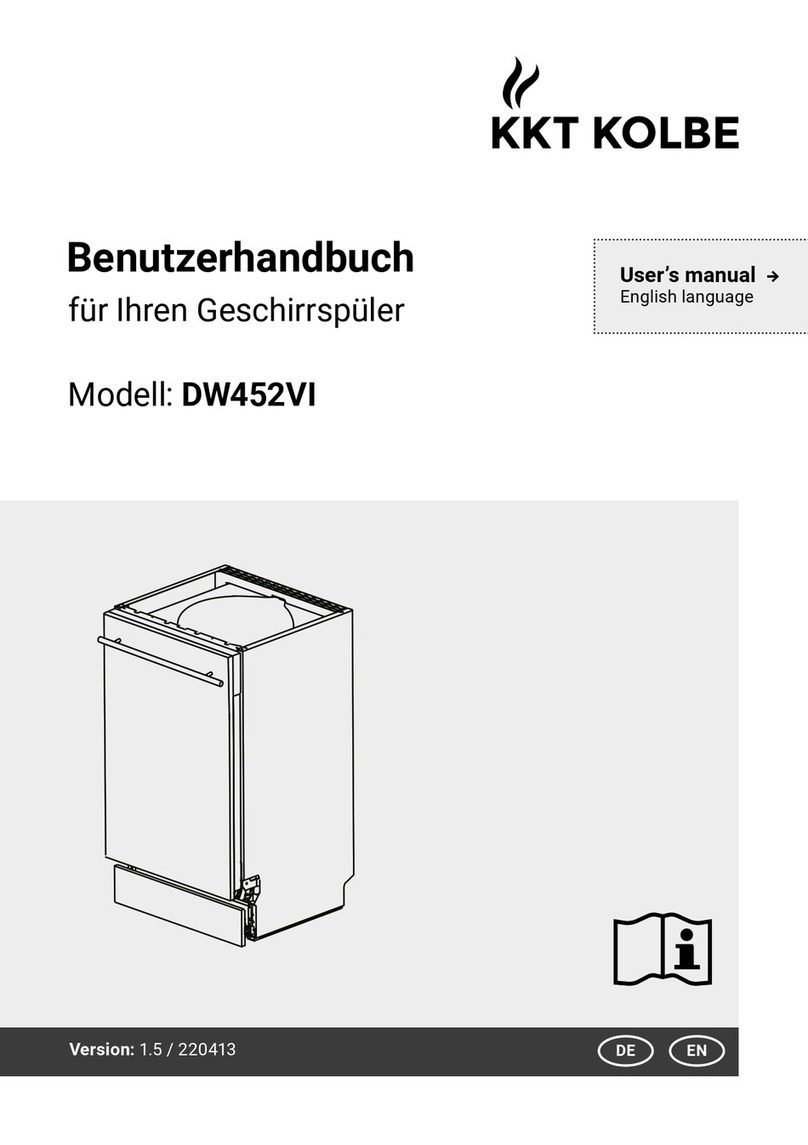
EN
When using your dishwasher, follow
the basic precautions including the
following:
Hydrogen gas is explosive
Under certain conditions, Hydrogen
gas may be produced in a hot-water
system that has not been used for
two weeks or more. Hydrogen gas
is explosive. If the hot-water system
has not been used for such a period,
before using the dishwasher turn on
all hot-water faucets and let the water
ow from each for several minutes.
This will release any accumulated
hydrogen gas. As the gas is ammable,
do not smoke or use an open ame
during this time.
Warning! Proper use:
• Do not abuse, sit on, or stand on the
door or dish basket of the dishwasher.
• Do not touch the heating element during
or immediately aer use.
• Do not operate your dishwasher unless
all enclosure panels are properly in
place. Open the door very carefully if the
dishwasher is operating. There is a risk
of water squirting out.
• Do not place any heavy objects or stand
on the door when it is open. The appli-
ance could tip forward.
• When loading items to be washed:
Locate sharp items so that they are not
likely to damage the door seal;
Load sharp knives with the handles up to
reduce the risk of cut-type injuries;
• Warning: Knives and other utensils with
sharp points must be loaded in the bas-
ket with their points down or placed in a
horizontal position.
• When using your dishwasher, you should
prevent plastic items from contacting
with heating element.
• Check that the detergent receptacle
is empty aer completion of the wash
cycle.
• Do not wash plastic items unless they
are marked dishwasher safe or the equi-
valent. For plastic items not so marked,
check the manufacturer‘s recommen-
dations.
• Use only detergent and rinse additives
designed for an automatic dishwasher.
Never use soap, laundry detergent, or
hand washing detergent in your dish-
washer.
• Other means for disconnection from
the supply must be incorporated in the
xed wiring with at least 3mm contact
separation in all poles.
• Keep children away from detergent and
rinse aid, keep children away from the
open door of the dishwasher , there
could still be some detergent le inside.
• Young children should be supervised
to ensure that they do not play with the
appliance.
• This product is not designed for use by
persons (including children) who have
reduced physical, sensory or mental
capacities or persons with no experience
or knowledge, unless they are instruc-
ted and supervised in the use of the
appliance by a person responsible for
their safety.
• Dishwasher detergents are strongly al-
kaline. They can be extremely dangerous
if swallowed.
• Avoid contact with skin and eyes, and
keep children away from the dishwasher
when the door is open.
• The door should not be le in the open
position since this could present a trip-
ping hazard.
• If the supply cord is damaged, it must be
replaced by the manufacturer or its ser-
vice agent or a similarly qualied person
in order to avoid a hazard.
Safety Information
